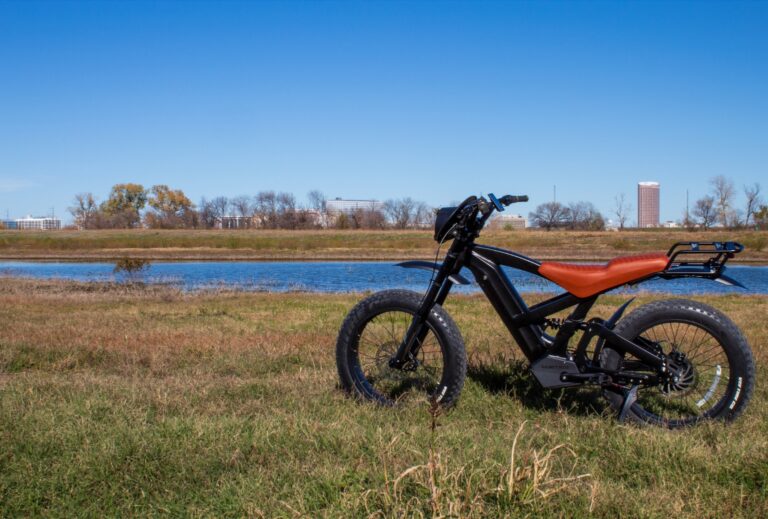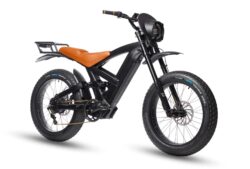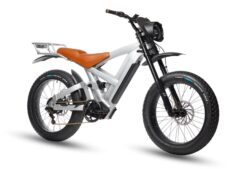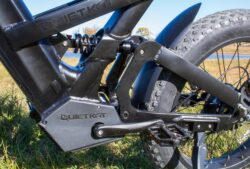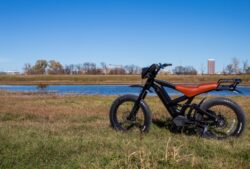The two-wheeler market is booming. Traditional motorbike sales reached 62.6 million in 2023, and e-bikes aren’t that far behind. Our eBikes.org report expects the global e-bike market to hit 44.2 million units on the road by the end of 2024, which is impressive, to say the least.
As both markets grow, we’re witnessing an interesting evolution: E-bikes and motorcycles are starting to share aesthetics. The increasingly blurred line between motorbikes and electric bikes shows a rising public desire for a more motorcycle-esque style — but in an e-bike.
Below, we explore both types, their unique features, and their specific use cases. We also throw in a third option for your consideration: the electric motorcycle.
So, plant your butt in the saddle, grip those handlebars, and let’s get the wheels spinning, shall we?
Electric Bike vs. Motorbikes: What’s the Difference?
Before you can choose the type of bike that’s best for you, let’s explore the fundamental differences between an e-bike and a motorbike.

What Is an E-Bike?
In simple terms, an e-bike is a regular bicycle equipped with an electric motor to help you pedal.
Here’s a breakdown of what goes into an e-bike:
- Power Source: Much like gasoline is fuel for a car’s motor, an e-bike’s battery supplies power to the motor. The motor then helps push you along and smooths out your ride with two power mode options: pedal assist system (PAS) and throttle. All e-bikes come with a PAS that can give you a boost and reduce the amount of effort you need to give when pedaling. Only some come with a throttle, which provides assistance without pedaling. Speeds typically max out at 20 or 28 mph, although some can reach over 35 mph. The range varies from about 10 mi all the way up to 300 mi.
- Riding Experience: Riding an e-bike closely compares to riding a traditional bicycle, only you’ve got available assistance from the motor to help push you forward. You can choose the amount of power, whether that’s a slight assist on a hard-core workout or a full power boost for a near-effortless ride.
- Maintenance: E-bike maintenance varies based on how often you ride. However, you should generally seek a professional overhaul every 1,000 miles. Regular upkeep like cleaning, checking tire pressure, and cleaning the chain can greatly extend your bike’s lifespan.
What Is a Motorbike?
A motorbike (A.K.A motorcycle) is a traditional two-wheeled vehicle powered by a gasoline engine.
Here’s what sets motorbikes apart:
- Power Source: Motorbikes run on gasoline and have a combustion engine, which, depending on the size of the motor, allows for average top speeds of 70-150 mph.
- Riding Experience: Riding a motorbike typically involves manual gear shifting and offers a sensory experience of sound and speed, appealing to those who enjoy a more ‘hands-on’ ride.
- Maintenance: Since motorbikes rely entirely on the motor, liquids, and filters, they require regular and often very involved maintenance. They also burn gasoline and produce emissions, which are typically regulated.
What Is an Electric Motorcycle?
Electric motorcycles bring the traditional motorbike vibes but are quite different from e-bikes. For example, some of the e-motos unveiled at CES 2024 could easily compete head-on with traditional motorcycles.
Here’s what sets them apart:
- Power Source: These bikes pack a serious punch with motors designed for average top speeds of 80 mph and a range of around 100 mi. Electric motorcycles use their motors to power the bike completely on their own — no pedaling. You control the speed with a throttle, much like you’d accelerate a gas-powered motorcycle.
- Riding Experience: Electric motorcycles do not have pedals, providing the feel of riding a traditional motorcycle. On average, these bikes weigh between 400-600 lbs, which does provide extra stability at higher speeds but makes them less nimble.
- Maintenance: Maintaining an electric motorcycle is simpler than its gas-powered counterpart due to its use of fewer fluids and filters. However, as with any type of electric vehicle, battery care is vital; consistently following the manufacturer’s charging instructions will help prolong battery life and avoid costly replacements.
But, Aren't E-Bikes Still Motor Vehicles?
The answer to that question lands in a bit of a gray area and often depends on your location. Let us explain.
E-Bike Classes
E-bikes typically come in three classes, with Class 1 and 2 e-bikes maxing out at 20 mph and Class 3 e-bikes capable of reaching speeds up to 28 mph.
However, some manufacturers have cleverly designed e-bikes that can toggle between these classes. This flexibility isn’t meant to mislead consumers; it’s to cater to a wider spectrum of rider needs while navigating diverse legal landscapes.
Such adaptable, out-of-class designs technically exploit existing loopholes, allowing these bikes to comply with local laws across different jurisdictions. However, they often include a high max speed well over 30 mph. At these speeds, some places classify them similarly to motor vehicles, imposing stricter regulations like those for motorcycles.
Legal Implications
Some states classify e-bikes with motors over 750 W and top speeds over 20 mph as motorized vehicles. This classification impacts where you can ride, and whether you need a license or registration.
We can’t overstress the importance of understanding these local rules, and a quick check of your state’s regulations can save you a lot of headaches later.
Regulatory Challenges
Our 2023 eBikes.org survey found that 15% of the U.S. population now owns an e-bike — showing rapid growth from previous years. As technological advancements push the boundaries of traditional cycling, the complexity of regulations continues to increase.
We found respondents split on what regulatory changes they want to see, from new speed limits to licenses. However, it’s clear that legal frameworks will need to evolve to effectively integrate electric bikes into our transportation system, ensuring safety and clarity for all road users.
E-Bikes vs. Motorcycles: Choosing What’s Right for You
When it comes to choosing between an e-bike and a motorcycle, it’s not about which is better, but which is right for you.
Here are some comparison points to help you decide.
Purpose and Use
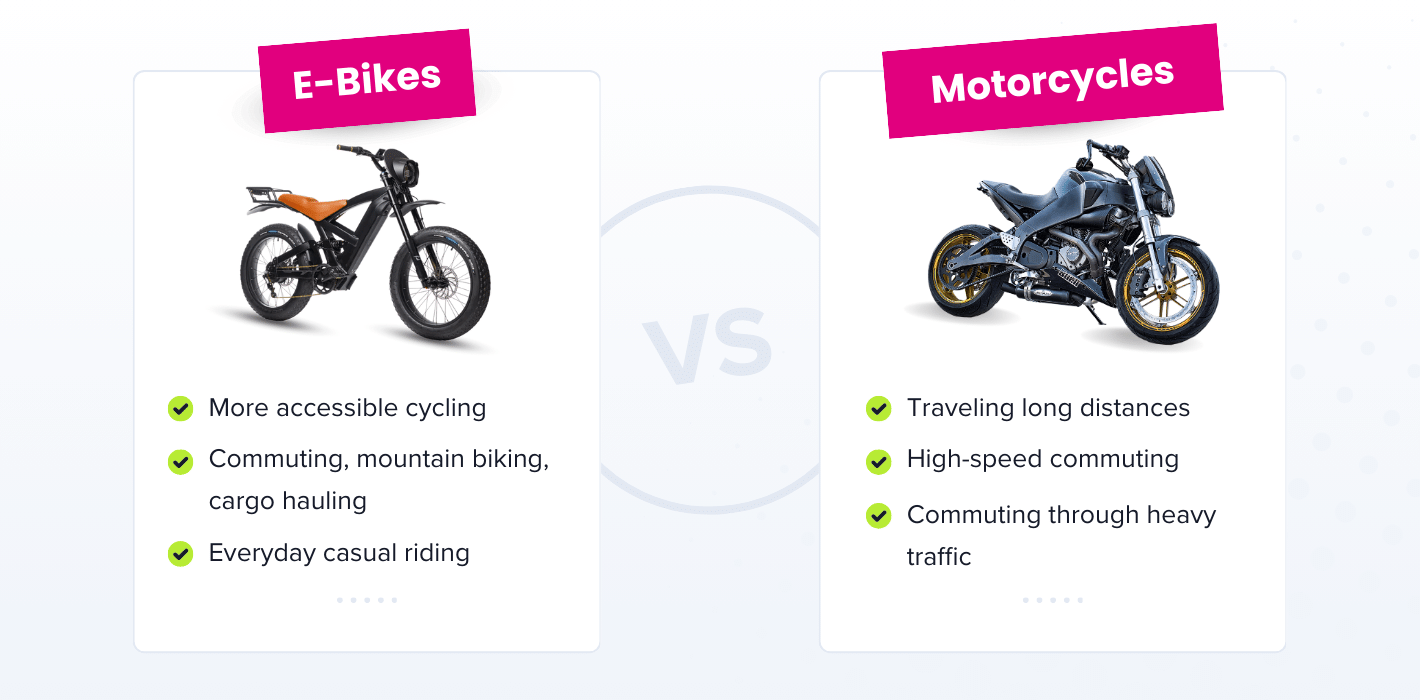
- E-Bikes: E-bikes help make cycling more accessible and less strenuous, essentially keeping the feel of a bicycle but with extra help when you need it. Capable of top speeds between 20 and 28 mph (sometimes 35+ mph), they’re not only perfect for everyday use like commuting to work, but also for hauling cargo, mountain biking, or even camping.
- Motorcycles: Designed for longer distances and average speeds of up to 150 mph, these types of two-wheelers eliminate the need for pedaling. If your commute includes a lot of highway travel or if you enjoy long road trips, a motorcycle — whether gas-powered or electric — might be the better choice.
Cost Considerations
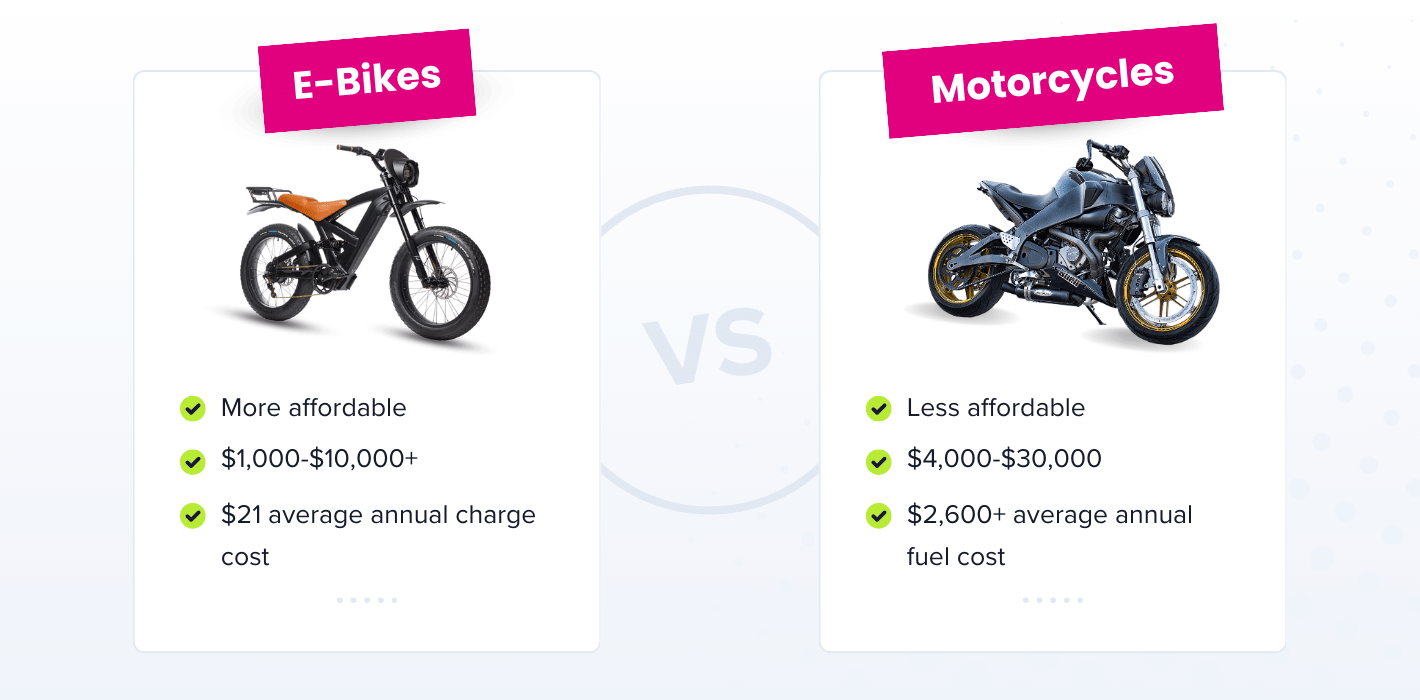
- E-Bikes: In general e-bikes are more affordable than motorcycles, not only to purchase but also to maintain and charge. While prices for e-bikes range from under USD 1,000 to over USD 10,000, they’re still more affordable in the long run. Our eBikes.org report shows that charging an e-bike costs about USD 21 annually — far less than the USD 2,635 the average American spends on gasoline each year. This makes e-bikes a cost-effective option for those looking to reduce their transportation expenses.
- Motorcycles: While it may be true that motorcycles use less gas than cars, they still require regular stops at the pump and are more expensive upfront. Even e-motorcycles that don’t use gas come with higher price tags. The average cost to buy a new motorcycle in 2024 is between USD 4,000 and USD 30,000, depending on the model. Simply put, motorbikes are an investment if you are looking for that happy-medium point between a bike and a car.
Environmental Impact
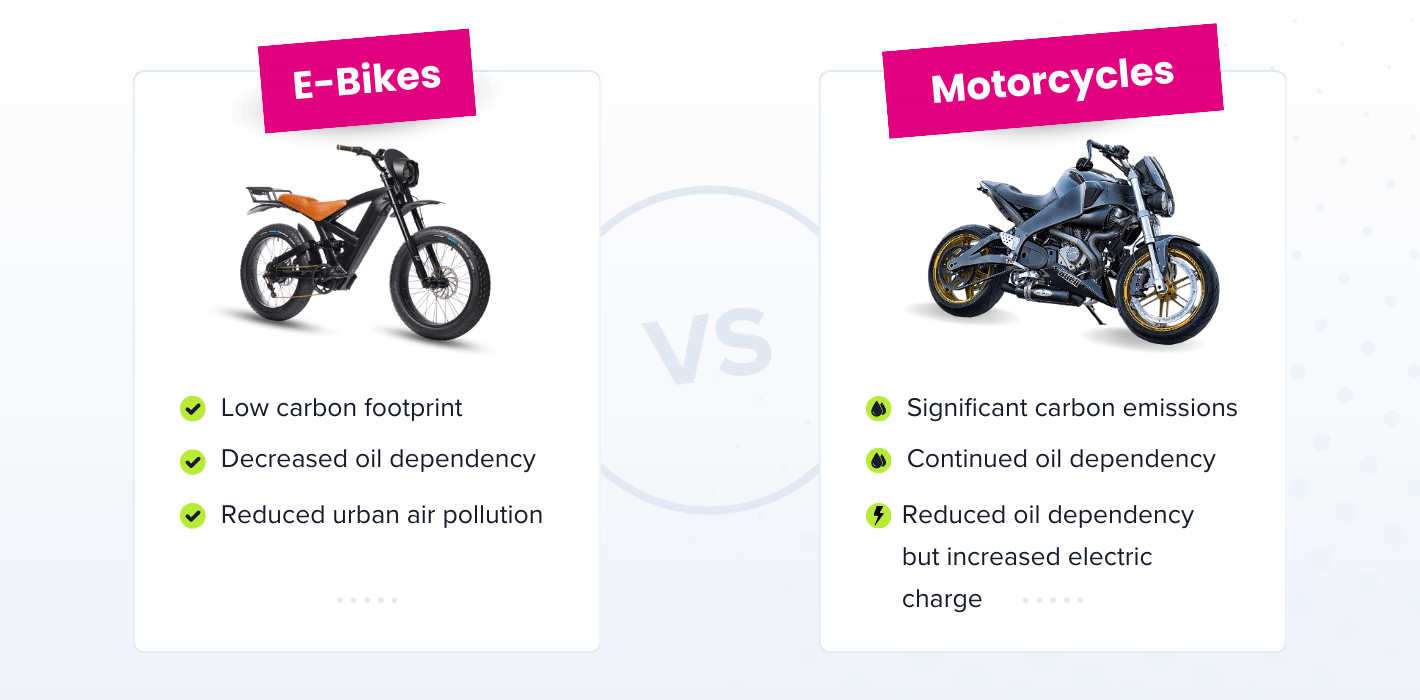
- E-Bikes: Our eBikes.org survey found that ecofriendliness was one of the top e-bike features for current owners, with 43% citing it as important. City dwellers — even those without e-bikes —value e-bikes for their environmental benefits, with 56% believing e-bikes could notably improve air quality.
- Motorcycles: Gas-powered motorcycles release a significant amount of carbon emissions and have a large (negative) environmental impact compared to their electric counterparts. In environmentally conscious markets where cleaner air and reduced oil dependency are growing priorities, electric motorcycles offer a cleaner alternative. Although they use more energy to recharge than an e-bike, they are an increasingly popular choice for consumers who prioritize sustainability but require more power and range than e-bikes provide.
These environmental considerations are becoming increasingly decisive for consumers, as reflected by our eBikes.org report. Our survey found a marked increase in the importance of sustainability in purchasing decisions, particularly among Gen X consumers.
Featured Models: E-Bikes That Resemble Motorcycles
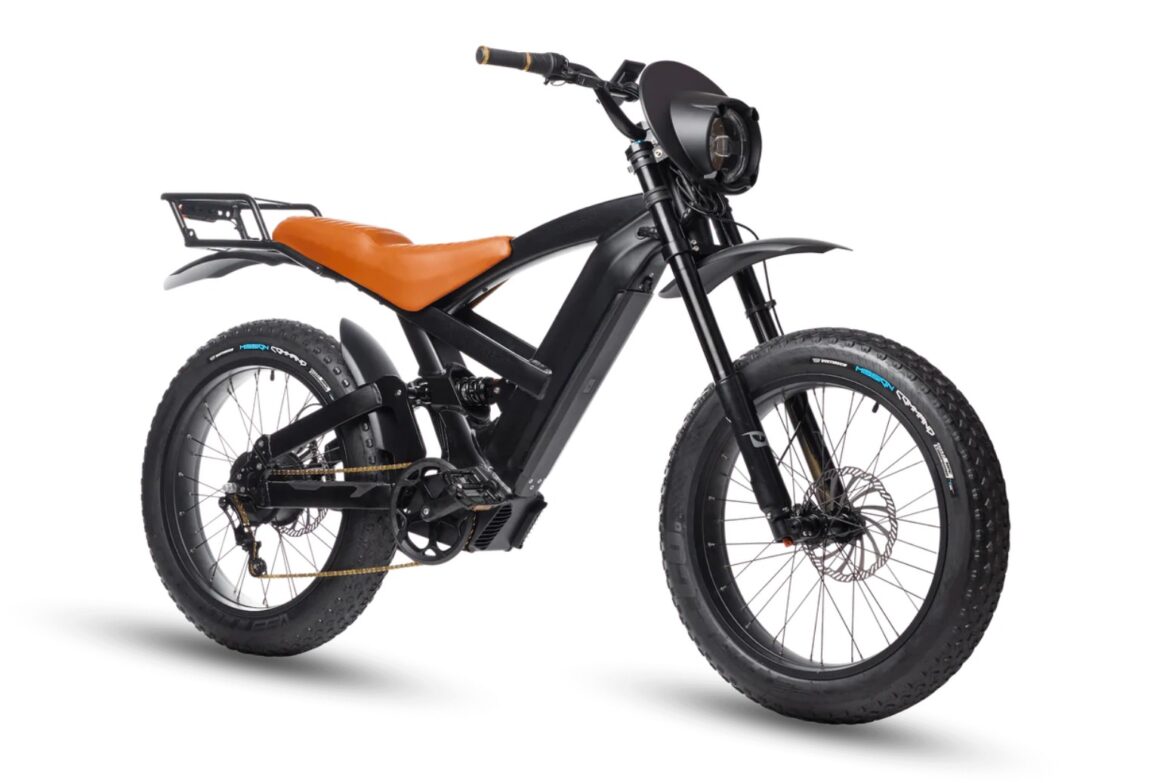
QuietKat Lynx
The QuietKat Lynx takes on the nostalgic silhouette of a café racer motorcycle, yet remains firmly in the e-bike category with its functional design. Priced around USD 4,000, it’s more affordable compared to the average motorcycle (which typically starts at USD 4,000 and goes up from there).
Powering up hills and navigating tough terrains, the Lynx’s 750 W motor provides a range and power that can rival the lower end of the traditional motorcycle spectrum.
This hybrid nature of the Lynx raises important regulatory questions, though. Its out-of-class capabilities could lead some areas to classify it differently than a standard e-bike, underscoring the evolving landscape of e-bike regulations and the need for clarity in how these versatile machines are categorized and governed.
Himiway C5
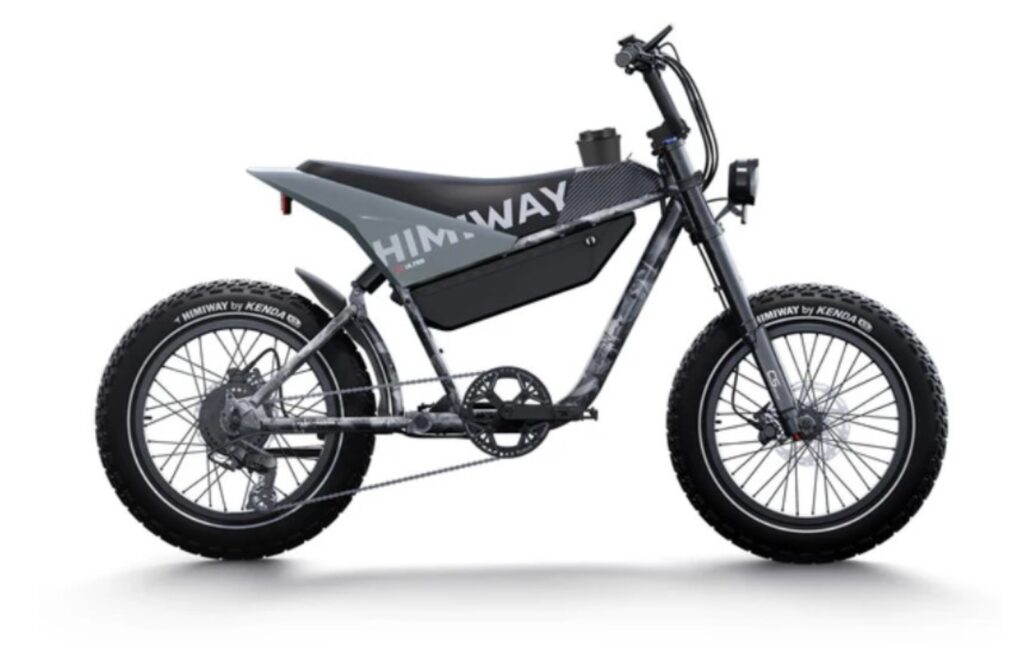
The Himiway C5 captures the motorcycle vibes with its unique design while maintaining an e-bike’s accessibility. At approximately USD 2,300, it offers a more budget-friendly option compared to a motorcycle.
Equipped with a 750 W brushless gear hub motor, the Himiway C5 boasts a significant range of up to 80 miles per charge, making it competitive with some motorbikes in terms of power and endurance.
However, its powerful capabilities might push it towards being classified as a motor vehicle in certain areas, especially with its motorcycle-like performance and capacity to handle heavier loads and tougher terrains.
Final Thoughts
Choosing between an e-bike, a motorcycle, and even an electric motorcycle really depends on what you’re looking for in terms of speed, distance, and riding experience.
As we look to the future, e-bikes are increasingly bridging the gap between bicycles and motorbikes, offering higher speeds and longer ranges that challenge our traditional views of what e-bikes can do.
This shift is not just about offering more power; it’s about providing new possibilities for mobility, blending the eco-friendly aspects of bikes with the performance characteristics of motorcycles.
Interested in where this is headed? Subscribe to our newsletter for ongoing updates on the latest trends and advancements in e-bike technology and innovations, right at your fingertips.
